Community
Tenby: The remarkable life of WW2 teleprinter operator who helped win the war

A 99-YEAR-OLD care home resident who regularly saw Winston Churchill during her top secret work at an intelligence base in the Second World War has revealed her unique role in history for the first time.
Grandmother-of-six Dorothea ‘Lilian’ Raymant, who lives at Woodland Lodge Care Home in Gumfreston, Tenby, was recruited as a teleprinter operator with the Women’s Auxiliary Air Force (WAAF) in 1940.
She spent four years sending encoded messages from the secret allied intelligence base at RAF Medmenham at Danesfield House in Buckinghamshire.
Alongside Bletchley Park, RAF Medmenham played a pivotal role in the war effort, housing a pioneering team of scientists, academics and inventors who together developed the then relatively new science of interpreting aerial photographs.
The information gleaned from the photographs, taken by courageous reconnaissance pilots across occupied Europe, was passed on in code to strategic departments and bases by specially-trained teleprinter operators.
Details of Lilian’s remarkable life are being revealed for the first time as part of this summer’s commemoration of the 75th anniversary of the D-Day Landings and the Battle of Normandy.
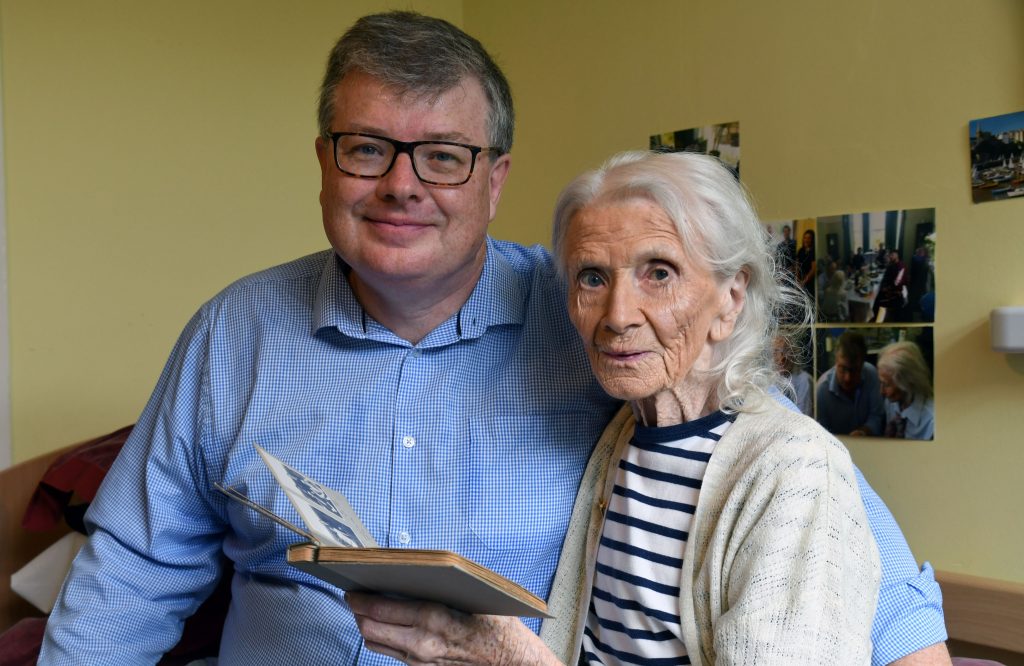
Former teleprinter operator Dorothea ‘Lilian’ Raymant with grandson Andrew
“I was a just a small cog in a big team and everyone did their bit,” said Lilian, who has released some personal photographs for usmarking her extraordinary life.
“We were targeting a common enemy. There were so many officers based there that the WAAFs were told not to bother saluting or they would have their hand permanently glued to their heads. It felt very democratic with so many people of rank in the one place.
“At the time, we didn’t realise the impact of what we were doing. Everything was managed in great secrecy. We certainly didn’t know the scale of D-Day.”
Her special role in history has now been praised by Mario Kreft MBE, the Chair of care industry champions Care Forum Wales.
“The work of Lilian and the wider team at RAF Medmenham is extraordinary and helped bring an end to the war. We all have so much to be grateful for,” he said
“I am delighted her special role in history can be finally revealed as the nation marks this important anniversary.”
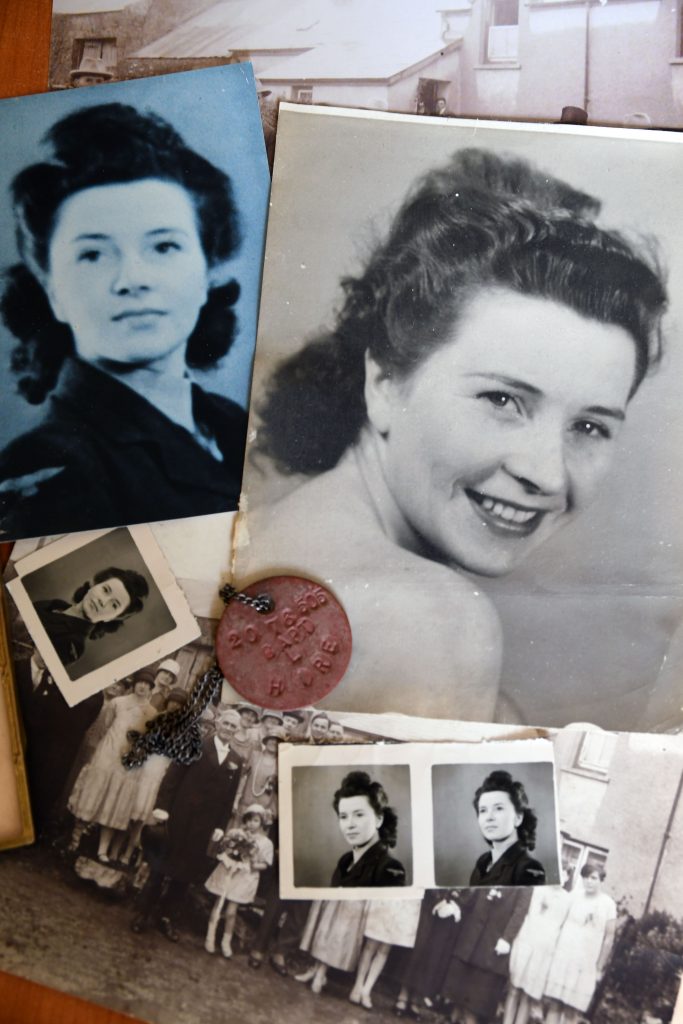
Born in 1920 in Pembroke Dock, Lilian was the youngest of seven children and the daughter of Owen Hire, a well-respected former Mayor of Pembroke and Pembroke Dock. Her uncle John Hire was the captain of a large sailing ship who saved the crew of a Norwegian vessel in a storm and was later rewarded for his heroics by the King of Sweden and Norway, while her grandfather William Jones was a decorated war hero who fought in the Crimean War.
She spent her early childhood growing up on the family farm before taking on clerical work in Pembroke Dockyard. Later, she joined the WAAF to train as a teleprinter operator.
The work carried out at RAF Medmenham is considered as significant as that of Bletchley Park.
It is estimated that 80 per cent of all intelligence in the war originated from aerial photography and the team, which regularly welcomed Prime Minister Winston Churchill and Britain’s highest-ranking army officer, General Alan Brooke, Chief of the Imperial General Staff, was at one stage producing up to seven million prints a month and was the centre for photographic reconnaissance and preparations for D-Day.
Among many triumphs, the centre led the identification by Lady Babington Smith, who Lilian knew at the time, of the V1 ‘Doodlebug’ launch site at Peenemunde and the discovery of Hitler’s V-weapons rocket programme.
“Although no one knew initially what they were, we were later told that the rocket launch sites were quickly highlighted as a target by the aerial photographic reconnaissance team because it was evident the Germans had gone to a lot of effort in their construction,” explained Lilian.
The team also studied enemy movement of ships and trains, factories, shipyards and advised targets to the Allied bombers as well as assessed damage and whether sites needed to be bombed again.
RAF Medmenham was involved in almost every operation in the war, producing aerial photographs that were translated into models of the channel coast and providing detailed information on beach gradients, tide levels, currents, typical waves and beach exits in the case of D-Day.
In addition it advised the locations of the Atlantic Wall German gun emplacements, pill boxes, wire entanglements, trench systems and every radar installation to a distance of 20 miles inland was noted.
Lilian was stationed alongside Churchill’s daughter, Sarah, a photographic interpreter, and has fond memories chattering with her on the beds in their barracks.
“Sarah would be clattering about in wooden clogs to protect her feet against the corrosive photographic developing chemicals,” remembered Lilian, who met Churchill’s daughter again many years later at a public event.
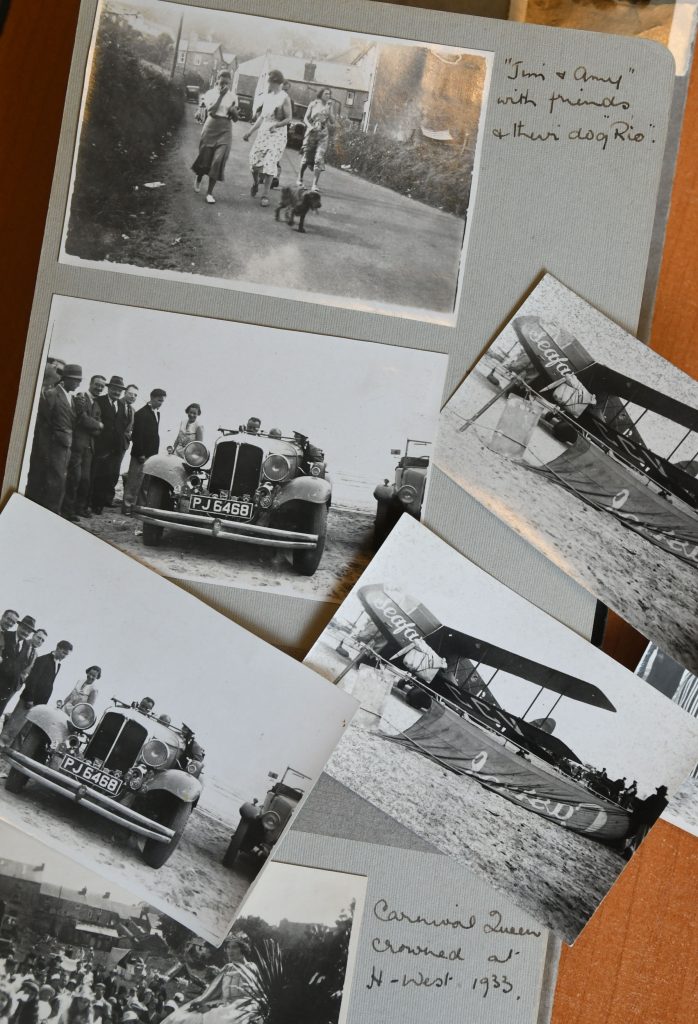
“You’d often see the Prime Minister arriving in his car although I never spoke to him.”
Lilian and the other girls would sometimes shin down the drainpipes at night to go off to the dances.
“It was all good clean fun” says Lilian, although after one such foray she was chased by the police for not having lights on her bicycle, and was put on ‘Jankers’ as punishment.
Sometimes they would dance with the American Airborne troops based at nearby White Waltham.
Her son, Andrew, who lives in Norfolk, a management consultant for logistics and supply chains, said: “I always thought as a young man my father had the more interesting war as he completed two tours of duty, one of the Eastern Mediterranean targeting Italian and German convoys and one as part of the Coastal Command at Pembroke Dock. But as more information came out about Bletchley and people talked about RAF Medmenham it became clear mum had been at the centre of some very interesting history indeed.
“Mum never really talked about it growing up. She had also signed the Official Secrets Act. She always felt the real heroes were the ones on the battle field who never came back.
“It was a time of great trauma for them. They didn’t really have a clear picture of what was going on but sometimes the results of the bombings would be fed through.
“When the aerial photos came back from D-Day, they saw lots of little black dots in the water which of course were the bodies of those who didn’t come back from the beaches.
“It would’ve been very difficult to see it as just an administrative job although it is only later on that they would’ve understood the reality of what had happened.”
Later in the war, in 1945, Lilian was posted back to Pembroke Dock and the RAF Coastal Command Station in the dockyard. During WW2, Pembroke Dock became the world’s largest flying boat station and it was here Lilian met her future husband, Frank ‘Ray’ Raymant, who was taking part in Sunderland Flying Boat search and destroy missions against the U Boat threat, both during the battle of the Atlantic and the build up to D-Day.
The couple went on to have three sons, Michael, 60, and Andrew, 56, and David, who sadly died in his teens, but not until Lilian had established a successful career in civilian communications.
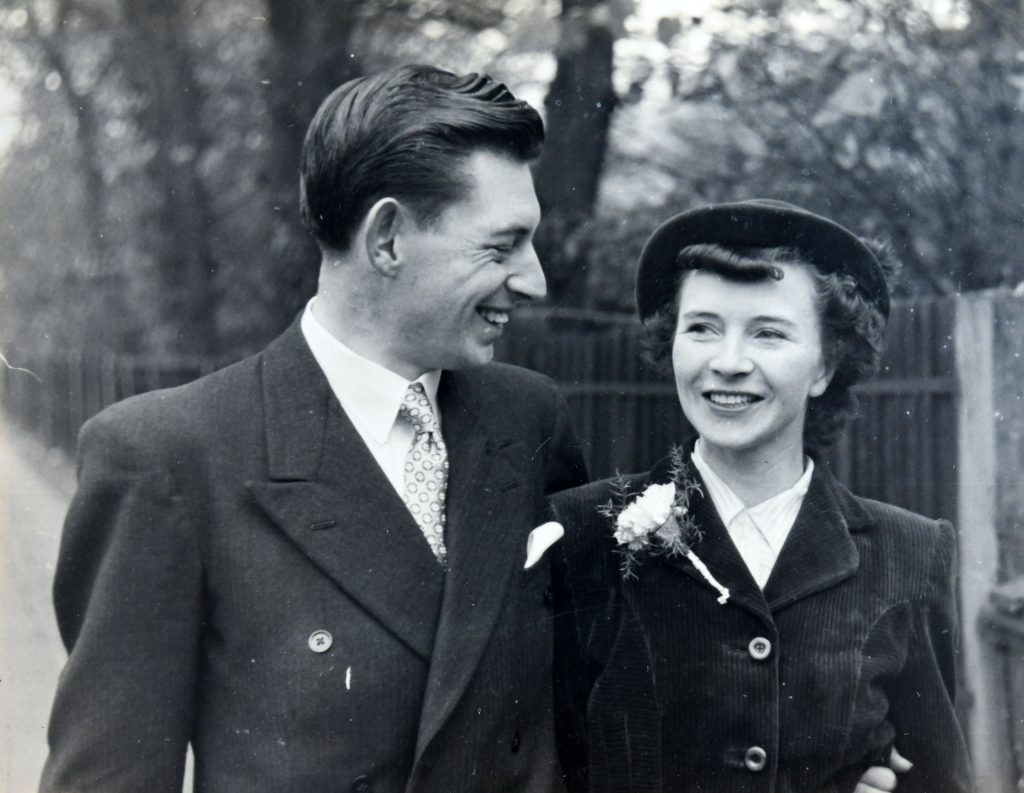
Wedding photo with husband Ray
After the war, highly-trained Lilian was recruited by Dutch airline KLM and later food exporters AJ Mills & Sons.
“The whole family is very proud of mum and for who she is,” said Michael, who is head of Welsh Language Service for North Wales Police.
“She was around during a remarkable part of history. The grandchildren, Hefin, Branwen, Siwan, Meirion, Brychan and Heledd, are very proud of all her achievements then and also for what came afterwards.”
Olivia Etheridge, deputy manager of Woodland Lodge Care Home, described Lilian as a charming and “marvelously knowledgeable” lady.
“We all love to hear her stories about her life, from make-overs in Bond Street to befriending Winston Churchill’s daughter,” she added.
“Lilian is a kind, polite and glamourous lady who deserves recognition for all of the fantastic things she has done in the 99 years of her life.”
Community
Craig Flannery appointed as new Chief Fire Officer

MID AND WEST WALES FIRE SERVICE LEADERSHIP CHANGE
MID and West Wales Fire and Rescue Service has announced the appointment of Craig Flannery as its new Chief Fire Officer, with effect from Monday, December 15, 2025.
Mr Flannery has served with the Service for more than twenty years, progressing through a wide range of middle management and senior leadership roles across both operational and non-operational departments.
During his career, he has been closely involved in strengthening operational delivery, risk management and organisational development. His work has included leading innovation in learning and development, overseeing the Service’s On-Call Improvement Programme, and driving investment in key enabling functions such as workforce development and information and communication technology.

The appointment followed a rigorous, multi-stage recruitment process led by Mid and West Wales Fire and Rescue Authority. Candidates were assessed through structured interviews, strategic leadership exercises and scenario-based assessments designed to test operational judgement, organisational vision and the ability to lead a modern fire and rescue service.
External professional assessors were also engaged to provide independent scrutiny, ensuring the process met high standards of fairness, transparency and challenge.
Mr Flannery emerged as the strongest candidate, demonstrating clear strategic leadership capability, detailed organisational knowledge and a strong commitment to community safety and service improvement.
Councillor John Davies, Chair of Mid and West Wales Fire and Rescue Authority, said: “Craig brings a deep understanding of our Service and a clear vision for its future. His appointment will strengthen our ability to innovate, support our workforce and deliver high-quality protection for the communities we serve.
“As we navigate a rapidly changing landscape, Craig’s experience in driving innovation and organisational development will be invaluable in helping us adapt and transform for the future.”
Commenting on his appointment, Mr Flannery said: “It is a privilege to lead this outstanding Service. I am committed to supporting our people, strengthening partnerships and building on the strong foundations already in place.
“As the challenges facing fire and rescue services continue to evolve, we must modernise and innovate, ensuring we have the skills, technology and capability needed to meet the needs of our communities. I look forward to working with colleagues and partners across Mid and West Wales to deliver a resilient, progressive Service that keeps people safe and places our staff at the heart of everything we do.”
Community
Senedd unanimously backs sign language bill

PLANS to make Wales the best place in the UK for British Sign Language (BSL) users moved a significant step closer to becoming law with the Senedd’s unanimous support.
If ultimately passed, the BSL bill – introduced by the Conservatives’ Mark Isherwood – would end Wales’ status as the only UK nation without specific sign language protections.
Leading a debate on Wednesday December 17, Mr Isherwood said the Senedd supporting the bill’s general principles was a “huge step ahead” for the “vital” legislation.
Mr Isherwood, a disability rights campaigner for decades, explained his backbench bill would introduce legal requirements to promote and facilitate the use of BSL in Wales.
He said the bill, if passed, would be the most progressive piece of BSL legislation anywhere in the UK, recognising BSL is a language in its own right, not a communication support need.

He highlighted that the bill would establish a BSL adviser role, the first statutory post of its kind in the UK, describing its importance as something that “cannot be overstated”.
Mr Isherwood, who chairs cross-party groups on disability and deaf issues, told the Senedd: “This isn’t just my bill. This is the bill of the BSL community. Let’s make this happen together and be proud of it together on behalf of deaf people across Wales.”
Jenny Rathbone, the Labour chair of the Senedd’s equality committee, was convinced of the “overdue” need for legislation to give more standing to British Sign Language.
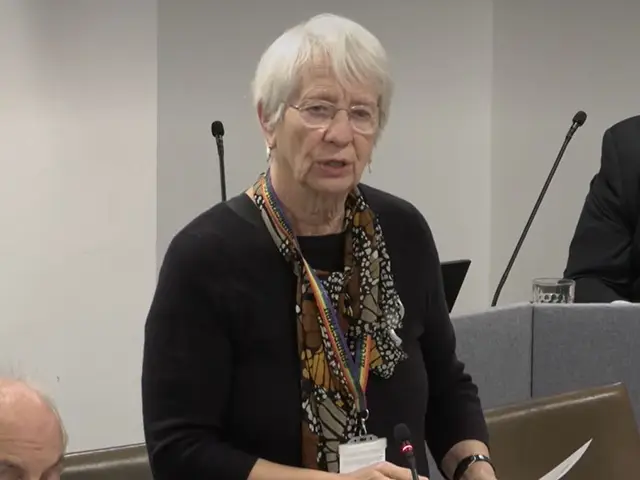
Ms Rathbone said the committee heard the biggest barrier “by some margin” was the availability of interpreters and the sustainability of the workforce.
She quoted a signer who told the committee: “The bill would make us feel respected and valued. But without proper funding, planning and deaf-led leadership, it won’t go far enough.”
Sioned Williams, Plaid Cymru’s shadow social justice secretary, told Senedd members: “Language is a part of our identity, our culture and our personal dignity.
“When someone cannot use their language, they are excluded from education, health care, employment and public life – and that is not acceptable in today’s Wales.”
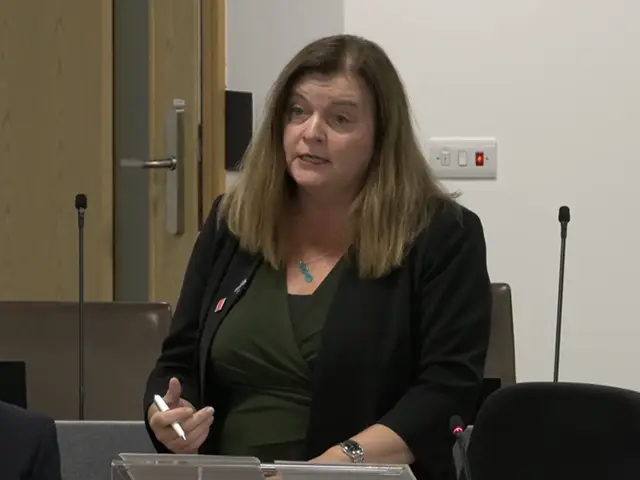
Ms Williams warned that if the legislation fails to deliver real change, the deaf community would be left “angry, disappointed and very, very disheartened”.
She expressed concern that the bill does not legally require the BSL adviser to be a deaf person, arguing it is “not appropriate, possible or efficient” for non-signers to lead the way.
Mr Isherwood defended the decision not to require that the adviser must be deaf, warning a successful legal challenge to a single such provision could cause the entire bill to fail.
Welsh Liberal Democrat leader Jane Dodds warned of an immediate workforce crisis, with only 54 registered sign language interpreters in Wales as of July.
With many now approaching the end of their working lives, she said: “We cannot – we must not – allow this bill to fail because we didn’t have the foresight to address this crisis now.”
Support for the bill stretched across the political spectrum, with Reform UK’s Laura Anne Jones similarly welcoming the “long-overdue” and “vital” legislation.
Jane Hutt, Wales’ social justice secretary, confirmed the Welsh Government’s financial backing, committing £214,300 for the bill’s first year of implementation in 2026/27.
If it clears the final hurdles, Mr Isherwood’s proposal will be the first backbench bill to enter the statute book in about a decade following the Nurse Staffing Levels (Wales) Act 2016.
Community
‘Nowhere I can play’: Disabled children excluded from Welsh parks

NEARLY four in ten disabled children in Wales “never or hardly ever” play outside due to a “heartbreaking” lack of accessible parks, politicians have warned.
Rhys ab Owen, an independent, described the situation as “disgraceful” as he cited a Play Wales report showing 37% of disabled children are effectively shut out of playgrounds.
Leading a debate in the Senedd on Wednesday December 17, he read the testimony of a ten-year-old boy from Blaenau Gwent who said: “Nowhere disabled friendly – parks haven’t got disabled friendly equipment, so I can’t play.”
Mr ab Owen warned: “There shouldn’t be any discrimination… disabled children do face much greater problems in terms of park maintenance, and with accessibility and inclusion.”
He shared the experience of a 13-year-old girl from Newport who told researchers: “There’s nowhere I can play or hang out safely by myself as I use a frame to help me walk.”
The former barrister warned budget cuts were leading to a managed decline in standards, quoting a 13-year-old from Caerphilly who said: “Due to anti-social behaviour our equipment gets broken, burnt and vandalised and is then not replaced.”
The Conservatives’ Natasha Asghar was stunned by the scale of the crisis and revealed that only 11% of playgrounds in Wales are rated “green”, meaning they are fully accessible. By contrast, almost half are rated “red” for poor accessibility.

Listing the barriers families face, Ms Asghar highlighted that 30% of sites lack accessible paths and nearly one in five have gates too narrow for wheelchairs. “Those are just two of the barriers preventing disabled children from accessing play,” she said.
Jane Dodds, the leader of the Liberal Democrats in Wales, argued the shocking statistics should be a wake-up call for Senedd politicians.
“To hear that 37% of disabled children in Wales say they never or hardly ever play outside should be a figure to stop us all in our tracks,” she said.

Meanwhile, Mike Hedges pointed out that Wales became the first country in the world to put a duty on councils to secure “sufficient play opportunities” for children in 2010.
And Julie Morgan, a fellow Labour backbencher, celebrated Cardiff becoming the UK’s first Unicef-accredited child-friendly city in 2023.
Dawn Bowden, the minister for children, pointed to £5m to improve playgrounds this year but she too was “disappointed” by play satisfaction figures falling from 84% to 71% since 2019.

She said the Welsh Government has provided a “toolkit” to Wales’ 22 councils, “ensuring a holistic outcome-focused approach” to inclusive and accessible play.
The cross-party motion, which called for play to be protected from cuts – as well as improved access for disabled children – was agreed unanimously but does not bind ministers.
-

 Crime1 day ago
Crime1 day agoMilford Haven man jailed after drunken attack on partner and police officers
-

 News4 days ago
News4 days agoDyfed-Powys Police launch major investigation after triple fatal crash
-

 Crime1 day ago
Crime1 day agoTeenager charged following rape allegation at Saundersfoot nightclub
-

 Crime2 days ago
Crime2 days agoMan charged with months of coercive control and assaults
-

 Crime3 days ago
Crime3 days agoMan sent to Crown Court over historic indecent assault allegations
-

 Crime5 days ago
Crime5 days agoMan spared jail after baseball bat incident in Milford Haven
-

 Crime3 days ago
Crime3 days agoMilford Haven man admits multiple offences after A477 incident
-

 Crime2 days ago
Crime2 days agoWoman ‘terrified in own home’ after ex breaches court order
































